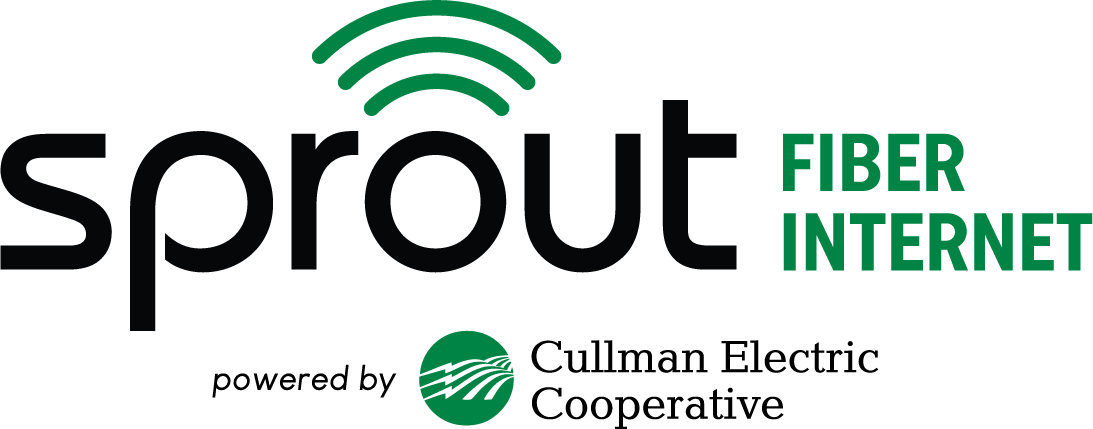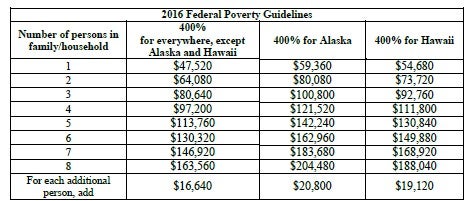The Sprout Fiber Internet (“Company”) Acceptable Use Policy (“AUP”) governs the use of internet-related services provided by Company. All contractual terms also apply.
This AUP supersedes all previous releases of this document.
I. INTRODUCTION
In this AUP, “Service(s)” refers to any internet-related service you (“Subscriber”) receive from Company or its affiliates, including but not limited to high-speed internet access, dedicated internet access, or managed service. By using any Service, Subscriber agrees to abide by and be bound by the terms and conditions set forth in this AUP. This AUP may be revised or modified by Company at any time. Updates to the AUP are immediately in effect once the changed AUP is posted on the Company website. Continued use of Services by Subscriber following the posting of AUP updates shall constitute acceptance of any changed or additional terms.
II. VIOLATION OF THIS ACCEPTABLE USE POLICY
Violation of this AUP may result in Company taking actions ranging from a warning to a suspension of privileges or termination of Services. Company may but is under no obligation to: (i) provide Subscriber with advance notice of an AUP violation, via email or otherwise, and (ii) request that such violation be immediately corrected prior to taking action. Company reserves the right to act immediately and without notice to suspend or terminate Services. When Company determines, in its sole discretion, that the conduct may:
Expose Company to sanctions, prosecution, or civil action;
Cause harm to or interfere with the integrity or normal operations of Company’s Services, networks or facilities;
Interfere with another person’s use of Company Services or the Internet;
Damage or disparage the reputation of Company or its Services; or
Otherwise present a risk of harm to Company or Company’s Subscribers or their employees, officers, directors, agents, or other representatives.
Company(i) may refer potential violations of laws to the proper authorities, (ii) may cooperate in the investigation of any suspected criminal or civil wrong, and (iii) will cooperate with authorities when required to do so by law, subpoena, or when the public safety is at stake. Company assumes no obligation to inform Subscriber that your account related information has been provided to law enforcement authorities and, in some cases, may be prohibited by law from providing such notice. Company shall not be liable for any damages of any nature suffered by Subscriber or any other Subscriber, user, or third party resulting in whole or in part from Company exercise of its rights under this AUP.
III. PROHIBITED USES AND ACTIVITIES
General Use Policy
Subscriber is responsible for complying with the AUP. Subscriber is also responsible for the actions of others who may be using the Services under the subscriber’s o account. Subscriber must respond in a timely manner to complaints concerning the use of services. If Company is alerted to or otherwise becomes aware of violations or potential violations of this AUP, Company will take whatever measures it deems necessary and appropriate to stop or prevent those violations.
Abuse of email; Spamming
Mass emailing and “mail-bombing” (sending mass email or deliberately sending excessively large attachments to one recipient) are prohibited. Business-class accounts may have different volume limitations, and usage will be judged by the type of account and the use. Forging email headers (transmission information) is prohibited. Using another computer without authorization, sending email messages, or retransmit email messages for the purpose of misleading recipients as to the origin is prohibited. Use of email to harass or intimidate other users is prohibited.
Violation of the CAN-SPAM Act of 2003 or any state or federal law regulating email is a violation of this AUP. Company reserves the right to seek damages and other available relief against Subscriber and/or any third parties as applicable. For purposes of this AUP, such violations are determined by Company in its sole discretion.
No Resale/Sharing of Services
Subscriber is prohibited from reselling the Service or otherwise making the Service available to third parties (for example, through Wi-Fi or other methods of networking), in whole or in part, directly or indirectly, unless expressly permitted by your Business Services Agreement.
For residential accounts, Subscriber agrees that Services will not be made available to anyone other than your family and household guests. For business accounts, except as provided in an applicable Business Services Agreement, Subscriber agrees that the Service will not be made available to anyone other than your business or your business’s authorized employees.
IV. SUBSCRIBER CONDUCT
Facilitating a Violation of this AUP
Subscriber is prohibited from advertising, transmitting, or otherwise making available any software, program, product, or service that is designed to violate or facilitate a violation of this AUP and/or any law. This includes, but is not limited to, the facilitation of the means to spam, infringe on copyrights, and pirate software.
Illegal Activity; Tortious Conduct
Any use of the Services to violate any local, state, or federal law or regulation also violates this AUP. Prohibited activities include, but are not limited to:
Transmitting any defamatory, libelous, fraudulent, deceptive, indecent, offensive, or obscene materials;
Using the Services to deliver spyware, or secretly or deceptively obtain the personal information of third parties (e.g., phishing);
Intentionally spreading computer viruses;
Exporting software or technical information in violation of U.S. export control laws;
Gaining unauthorized access to private networks;
Engaging in the transmission of pirated software;
Unauthorized copying, distribution, or display of copyrighted material;
Conducting or participating in illegal gambling;
Soliciting for illegal pyramid schemes through email or USENET postings;
Violating rules, regulations, and policies applicable to any network, server, computer database, web site, or ISP that you access through the Services;
Threatening, harassing, abusing, or intimidating others;
Engaging in activity, illegal or not, that Company determines in its sole discretion to be harmful to its Subscribers, operations, or networks;
Making fraudulent offers of products, items, or services; or
Creating or attempting to utilize a domain name that is defamatory, fraudulent, indecent, offensive, deceptive, threatening, abusive, harassing, or which damages the name or reputation of Company.
Third Party Rules
Subscriber may have access through the Services to search engines, subscription Web services, chat areas, bulletin boards, Web pages, USENET, social networking sites, or other services that promulgate rules, guidelines, or agreements to govern their use. Failure to adhere to any such rules, guidelines, or agreements shall be a violation of this AUP. Company reserves the right not to accept postings from newsgroups where we have actual knowledge that the content of the newsgroup violates the AUP.
Copyright Infringement
Company complies with the Online Copyright Infringement Liability Limitation Act of 1998. 17 USC 512 (“Act”). As required by the Act, Sprout Fiber Internet reserves the right to terminate services to Subscribers infringing upon copyrights. If we receive a determination that any Subscriber or account holder has infringed another’s copyright through the use of our System or network, we reserve the right to terminate Service to that Subscriber after receiving notice of any further copyright infringement by that Subscriber. Company accommodates and does not interfere with standard technical measures to identify and protect copyrighted works, subject to the limitations of the Act.
V. NETWORK MANAGEMENT
As permitted by law, Company may establish appropriate limitations on bandwidth, data storage, or other aspects of the Service by amending this AUP. Subscribers must comply with all such limitations prescribed by Company.
System or Network Security
It is Subscriber’s responsibility to ensure the security of Subscriber’s network and the equipment (“System”) which connects to the Services. Subscriber is required to take all necessary steps to secure and manage the use of the Services in such a way to assure that network abuse and/or fraudulent activity is prevented. Violations of System or network security may result in criminal and/or civil liability.
Failing to secure the System against abuse or fraudulent activity is a violation of this AUP. Subscriber is responsible for configuring and securing the System and the Services to prevent unauthorized access to the System and/or the Company network and related Services.
Subscriber is responsible for any fraudulent activity that may occur due to failure to secure Subscriber’s network and the Services. Subscriber is responsible if unknown third parties utilize the Services at any time for the purpose of illegally distributing licensed software, engaging in abusive behavior, infringing upon copyrights of others, or engaging in any type of fraudulent conduct. Subscriber may not, through action or inaction (e.g., failure to secure Subscriber’s network), allow others to use Services for illegal, fraudulent or inappropriate uses, and/or any other disruptive, provoking, or abusive behavior that is in violation of these guidelines.
Responsibility for Content
Subscriber is responsible for any content which is offered or received through the Service.
Password Security
If applicable, Subscriber’s password provides access to your individual account. It is Subscriber’s responsibility to keep the password secure. Subscribers are responsible for any and all access to or use of the Services through Subscriber’s account. Attempting to obtain another Subscriber’s account password is prohibited.
VI. CONTACT INFORMATION
Contact for Reporting Abuse
Any party seeking to report a violation of this AUP may contact us via email at sprout@cullmanec.com.
Contact for Copyright Infringement
Notices and counter-notices related to claimed copyright infringements should be directed to the following designated agent:
Copyright Agent
Cullman Electric Cooperative/Sprout Fiber Internet
PO Box 1168
Cullman, AL 35056
Email: sprout@cullmanec.com
Due to the substantial volume of notifications of claimed infringement that is received and processed by Company, we are unable to accept notices of alleged copyright infringement via this designated agent, or email address other than notifications of claimed infringement sent pursuant to Sections 512(b)-(d)

